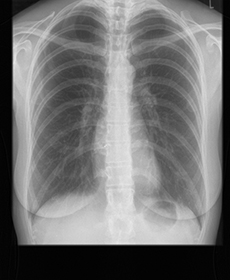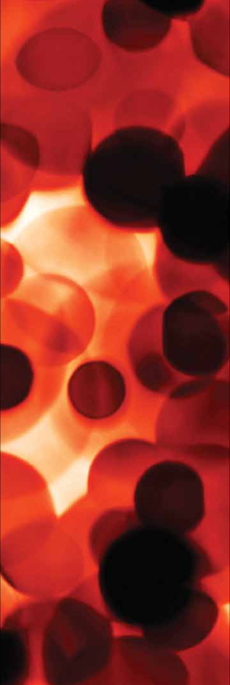




| Home | Features | Club Nights | Underwater Pics | Feedback | Non-Celebrity Diver | Events | 29 June 2025 |
| Blog | Archive | Medical FAQs | Competitions | Travel Offers | The Crew | Contact Us | MDC | LDC |

|

|
 
 |
   ISSUE 16 ARCHIVE - AT THE CHAMBERZoe DiderichLast year I went diving in Pembrokeshire. Instead of coming back with nice pictures of seals and shipwrecks, I took home a spinal bend. It had a significant physical and psychological impact on me.As there was no apparent reason for my bend, I was told that I should see a cardiologist to check whether I had a Patent Foramen Ovale (PFO). A PFO is a hole between the left and right atria (upper chambers) of the heart which fails to close naturally soon after birth. A foramen ovale allows blood to go around the lungs when a baby grows in the womb, so the hole does not cause problems in an unborn infant. The opening is supposed to close soon after birth, but sometimes it doesn’t. In about one out of four people, this opening never closes. Bubbles formed in the bloodstream during a dive are filtered out in the lungs after blood returns to the right hand side of the heart. In divers who have patent foramen ovale, gas bubbles can pass directly into the left atrium, by-passing the lungs. This is commonly referred to as a shunt. Bubbles in the arterial blood are more likely to become lodged in body tissues, including the brain and spine, which can cause decompression illness. In my case, nitrogen bubbles entered the spinal cord, a common result of a PFO bend. I was advised to avoid walking when I arrived at the DDRC in Plymouth in case the bubbles shifted. After more than seven hours in the chamber, I felt severe soreness in my lower back and felt worse than when I went in. However, I was lucky I could walk at all. And following continued treatment at London Diving Chamber this got progressively better. I was still left with a strange buzzing feeling in my legs, which almost a year later, still comes and goes. I decided to go ahead with the PFO test as I couldn’t imagine giving up diving, but also found out that a hole in the heart can predispose you for a stroke or heart disease at a young age. I was referred to Dr Peter Wilmshurst, consultant cardiologist and leading authority on the subject, who performed what they call a bubble contrast echo at the Royal Shrewsbury Hospital. On arrival I had an electrocardiogram and a chest X-ray to check whether there were any underlying conditions. For the contrast echo, you lie on your side while the nurse holds an ultrasound on your heart. The doctor injected me with the saline solution about six times. Immediately after the contrast bubbles had reached the right atrium, I was asked to perform the valsalva maneuver and sniff. Echocardiographic images were recorded until the contrast bubbles had completely disappeared from the left heart chambers. I didn’t see the screen during the test as the doctor wanted to avoid causing any stress. He just gave me instructions and waited until we had finished the test. He then called in my partner Mark, and showed us the video. You could clearly see the bubbles migrating through to the left atrium when I sniffed. The doctor didn’t say anything, except “So you see...” He gave me a piece of paper that said “PFO on contrast echo”. I wasn’t really shocked, just a bit daunted by it. I would never have believed that I had one until the bend. But now it all made sense, and it made me feel like there was something wrong with me, even though I’d been living with this perfectly well for the last thirty six years. He called us into his office and explained that there were several options. Give up diving, which I didn’t want to do, dive at shallow depths using Canadian Air Tables, breathing Nitrox, or having the PFO closed. I made my decision immediately and it was easy. I didn’t want to take any risks. However, as time went by, it became real and the date for the operation was set. I elected the Liverpool Chest and Heart Hospital, as Dr Lindsay Morrison has the largest individual experience in PFO closures. On arrival, I realized that my ward consisted mainly of ladies of a certain age who had emphysema, or had just suffered strokes and heart attacks. It was quite a noisy ward as their monitors were beeping all through the night intermingled with heavy coughing outbursts. On the day of the operation, I was the last on the list and waited until 3pm for my turn. Thankfully, my mother and Mark were making me laugh hysterically to distract me, as I was going a bit green with fear. The lady in the bed next to mine asked me, “Do you pay National Insurance?” when she heard us speaking a foreign language. That made me laugh even more as I work for the NHS. Finally, I was taken to the “Cath Lab” to have the procedure. It was freezing cold. I was asked to lie down on the bed and various medical staff placed monitors on me. The closure is performed under general anaesthetic. The doctor puts an imaging probe in your mouth and passes it down your throat to examine your heart prior to closing the defect. The procedure is done through blood vessels in the groin. A small cut is made, and a catheter is inserted through the blood vessel towards the heart. A special dye is injected through the tube that can be seen on X-ray to examine the defect, it’s measured and the closing device is chosen. It is fed through the tube and sits either side of the defect. Once positioned, it is released and implanted in the heart. The tube and imaging probe are then removed, though you are left with a lovely cough which lasts several weeks. My procedure took about an hour. The risks are getting a stroke or dislodgement of the device. The next day, you have an X-Ray and ultrasound to check it hasn’t moved. If anything does go horribly wrong you may have to have open heart surgery. Luckily I felt fit as a fiddle as soon as I woke up from the operation. I was told that the hole was of a significant size. The medication I was given (blood thinners) is not the most pleasant thing in the world. It has been causing bruising, chest pain, skin rashes, short-term memory loss, and low mood in my case. The worst was not being as efficient as I normally am, as I am constantly struggling with different symptoms at different stages, and people’s lack of patience with this. One day at work, my chest pains were so severe that I decided to ring NHS direct. They insisted on calling an ambulance, and it was really embarrassing as my colleagues freaked out. The ambulance crew was very friendly, and told me I did look rather pale. “That’s how I always look” I replied. I was a goth in the early nineties... They gave me an ECG and sprayed a product on my tongue to dilate my blood vessels. They asked me if this had made a difference. I said “yes”, which apparently was a bad answer, as they turned the blue lights on as we hurtled towards the hospital. On our arrival, I was again surrounded by people who’d had strokes and heart attacks, coughing up blood and generally looking much worse than I did. Three hours later, the doctor sent me away, telling me I had heartburn. I was really annoyed as it was nothing like heartburn, and I made sure I told the doctor I thought it was ridiculous. The problem is, whenever I have explained that after the device was inserted in my heart, I have felt it there, sometimes it’s just a slightly uncomfortable feeling, sometimes it feels hot, sometimes it feels heavy, this has just been met with a look of bewilderment. “Well you shouldn’t be feeling that” is the answer I get. So what should I be feeling, and why can nobody tell me why I feel it there? Three months after the operation, I returned for another bubble contrast echo, to check if the hole had properly closed. It was a very jolly visit and I came out relieved, as the device had healed over well, and I was signed off to dive, just in time for the season! I also saw the X-rays of the device, and I was surprised at how big it is, no wonder I can feel it. I have returned to diving since, although it was a shallow dive on this occasion, I decided to breathe Nitrox, which I will do from now on. I did feel anxious, not about the dive itself but about my body, as it had let me down so dramatically on my last dive. However, five minutes into the dive, I had already forgotten the whole thing, and just enjoyed the moment. I could not hope for a better outcome. The experience I had was not easy, as I went through a range of emotions and I had to overcome the fear. As I am still taking the medication, I still feel I am held back from moving on with my life, as the effects of the bend and the medication are still felt. Luckily, my lovely family, partner and friends supported me throughout the experience. I am not sure I would have taken the decision to have the operation or not in hindsight, as the last few months have been quite difficult to get through. However, if I hadn’t had the operation, I would’ve felt worried about the PFO when diving but rather would’ve been preoccupied by the risk of heart disease. The care I received in all the facilities I visited was of a very high standard, I will now need to find a publisher for my “Good Chamber Guide” and “What’s Hot and What’s Not in Cardiology”– there is definitely a “hole” in the market for that. More info: the story of Zoe’s bend. Previous article « Underwater Photography Next article » Rob's World: How To Fake It Back to Issue 16 Index |